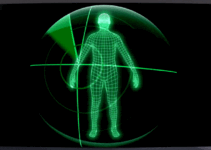- Led by Luis Echegoyen, Ph.D., from UTEP and Marta Plonska-Brzezinska, Ph.D., from Poland, the team developed a supercapacitor that achieved a record level of energy storage, or capacitance.
- Unlike batteries that use chemical transformations to store and retrieve energy, supercapacitors use oppositely charged surfaces, allowing them to charge much faster than batteries.
- The new supercapacitor uses a carbon “nano-onion” core structure to create multiple pores, enabling it to store a greater volume of energy, potentially revolutionizing energy storage in electronics and electrical systems.
Years ago there was a series of supercapacitor claims that simply didn’t come to fruition. The new landmark study claims are quite worthwhile after a long dry period of progress.
The study, led by Luis Echegoyen, Ph.D., professor emeritus at The University of Texas at El Paso, and Marta Plonska-Brzezinska, Ph.D., of the Medical University of Bialystok, Poland, was recently featured in the journal Scientific Reports, which has been published without a paywall by leading research publisher Nature Portfolios.
Supercapacitors are devices that store electrical energy between two metal plates that are close together but separated by a surface that cannot conduct electricity. Supercapacitors are similar to batteries, except that batteries store and retrieve energy using chemical transformations, while capacitors store energy by using oppositely charged surfaces. They are frequently used in machines that require rapid discharge of energy, like electric cars, buses, trains and cranes.
Echegoyen, a longtime faculty member within UTEP’s Department of Chemistry and Biochemistry noted, “This is a big step forward and gets us closer to achieving supercapacitors with high energy density, which would radically change how we store and manage energy.”
Supercapacitors have high potential because they can charge much faster than batteries – within seconds to fractions of a second, according to Echegoyen. However, current supercapacitors can only store a low amount of energy, which limits their range of potential applications. If supercapacitors could be designed to store more energy, they would be physically lighter and charge much faster than batteries, which would have a significant commercial impact, according to scientists.
The new supercapacitor designed by Echegoyen and Plonska-Brzezinska achieved a record level of storage, or capacitance, using a material with a carbon “nano-onion” core structure, which creates multiple pores that allow storage of a greater volume of energy.
***
Supercapacitors have lots of uses in electronics and electrical systems. So far not so much in the storage side of systems.
Back in the day, now a decade or more ago, there were hopes that supercapacitors could take a very quick charge and then somewhat slowly discharge into a battery thus speeding the charge cycle for say an EV owner.
Its good to see that capacitor science and research is back in the news. Perhaps the fast energy accumulation of a supercap will finally make to those of us in a recharge hurry!
By Brian Westenhaus via Newenergyandfuel.com
More Top Reads From Oilprice.com:
- New Revenue Sharing Scheme Could Lead To Iraqi Oil Renaissance
- China Snaps Up Record-High Volumes Of Russian Crude In The First Half Of 2023
- Carbon Prices Set To Fall As Europe Speeds Up Energy Transition


